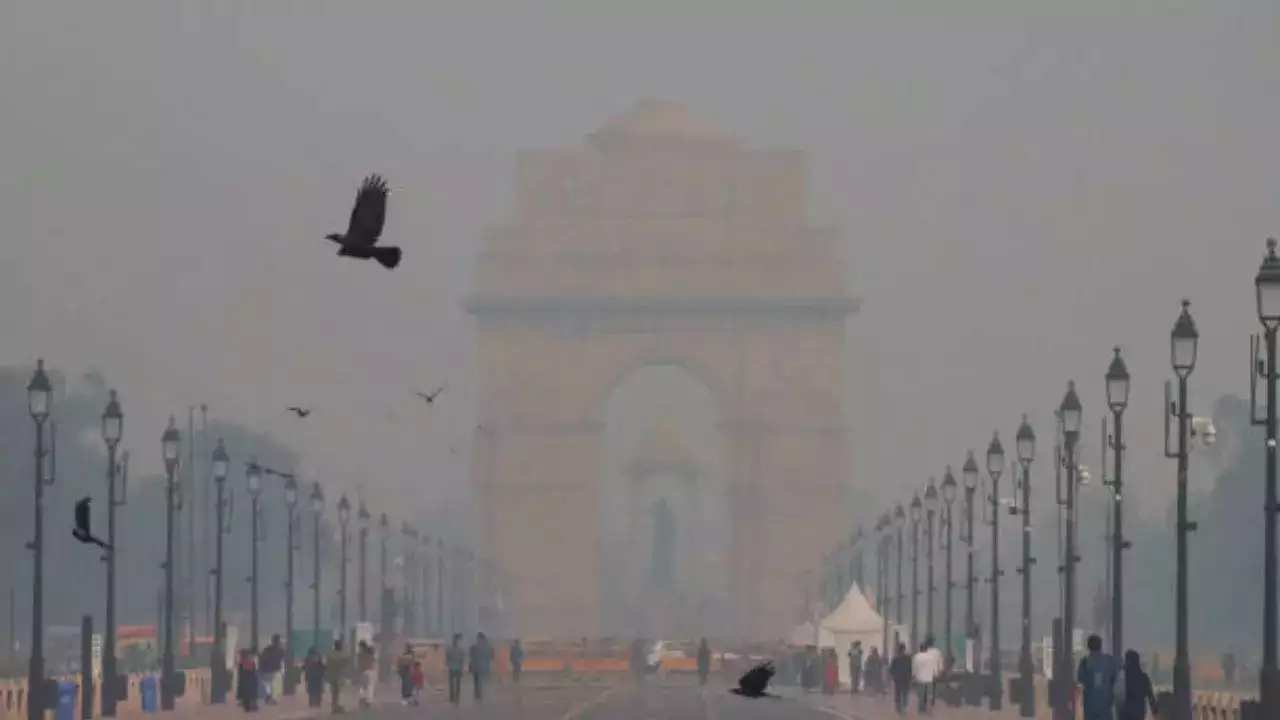Debosmita Ghosh • 19 Nov 2024
Delhi Air Pollution Hits ‘Severe Plus’ With AQI 500, Know How Severe AQI Can Worsen Allergy

Know How Severe AQI Can Worsen Allergy Symptoms As Delhi AQI Hits 500
Photo : iStock
The air quality in Delhi-NCR is in the ‘severe plus’ category with the Air Quality Index (AQI) in most stations touching the 500-mark today, November 19. This is the seventh day that NCR has been covered in a dense layer of smog. According to the Central Pollution Control Board (CPCB), the AQI at Delhi’s Anand Vihar, Ashok Vihar, Bawana, Jahangirpuri, Major Dhyan Chand Stadium and several other places touched the 500-mark at 5 AM on Tuesday.
According to a report in Hindustan Times, some of the areas with the worst AQI are Jawaharlal Nehru Stadium (500), Dwarka sector-8 (498), Mundka (500), North Campus (500), RK Puram (499) and Wazirpur (500).
AQI between 0-50 is considered “good”, 51-100 is “satisfactory”, 101-200 is “moderate”, 201-300 is “poor”, 301-400 is “very poor”, 401-500 is “severe” and above 500 is a “severe plus”.
Air pollution can severely impact one’s health. It can impact respiratory health, cardiovascular health and mental health among others. Air pollution can also worsen symptoms of allergy. Poor air quality significantly aggravates allergy symptoms by increasing the presence of airborne irritants like pollen, dust, and particulate matter.
When the AQI is high, pollutants can irritate the respiratory system, cause inflammation in the nasal passages and worsen conditions like hay fever and asthma. These pollutants also interact with allergens, thereby, triggering severe allergic reactions. People with pre-existing respiratory conditions are especially vulnerable during poor AQI days. This makes it important to stay indoors, use air purifiers and follow medical advice to reduce the impact of poor AQI.
Here, take a look at how severe AQI can worsen allergy symptoms.
Interaction Between Pollutant-Allergen
High AQI levels are linked to increased particulate matter that can bind to allergens like pollen. This interaction makes allergens more powerful, triggering stronger allergic reactions.
Irritation of Respiratory Passages
Pollutants like nitrogen dioxide and sulfur dioxide in polluted air can irritate the nasal and respiratory passages. This inflammation reduces the body’s ability to filter allergens, thereby, worsening symptoms like sneezing, congestion and wheezing.
Exposure to Allergen
Poor air quality often traps allergens that are close to the ground, thereby, prolonging exposure. Combined with pollutants, this increases the intensity and duration of allergic reactions.
Poor Immune Response
Exposure to high pollution levels can weaken the immune system’s ability to manage allergens, thereby, making people more susceptible to severe reactions.
Increased Sensitivity
Severe AQI can increase sensitivity to common allergens such as dust mites, mould spores and others, even for people with mild or no prior allergies.
Pre-existing Conditions
People with asthma or chronic allergies may experience increased symptoms during high AQI days, including more frequent asthma attacks or severe allergic reactions.
Delayed Recovery
Pollutants can slow the recovery process from allergy flare-ups by prolonging inflammation and reducing lung capacity, especially in vulnerable populations like children and the elderly.
Get Latest News Live on Times Now along with Breaking News and Top Headlines from Health and around the world.